What makes the perfect British village?

Picturesqueness, you might think, is one of those qualities that can be taken without moderation. A place is simply better for being prettier, and that’s that.
But then there’s Bamburgh, the little Northumbrian coastal village whose main intersection – whose only intersection, really – is grandly overlooked by Bamburgh Castle. A colossal Norman-Victorian confection of architectural might, the castle probably contains more stones than the rest of the village combined. It is enormous, imposing, exciting, a landmark the likes of which few British settlements can match.
It is also... annoying. Carlene Whitelaw, a mother of two who grew up here and works at the Lord Crewe hotel and restaurant, explains that she can hardly drive into the village without getting waylaid by tourists stopping to take a picture. “Get a postcard!” she says, joshingly. “Don’t pull over!”
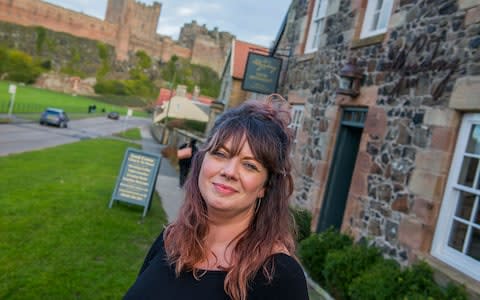
But for others who live here, the castle stands for comfort and familiarity. Jude Aldred, a parish council member whose family has owned the butcher’s shop since 1887, lives in the village, in the house in which she was born, with her daughter and three grandchildren nearby. “You get sight of the castle and you know you’re home,” she says.
The castle no longer wins battles for noblemen, but it might help the villagers win some silverware. Thanks in part to its dramatic scenery, Bamburgh is one of a four-strong field competing for the title of Village of the Year. Since Jan 15, the Channel 4 show has been filleting more than 400 entrants into the final quartet, and this evening will finally root out the winner.
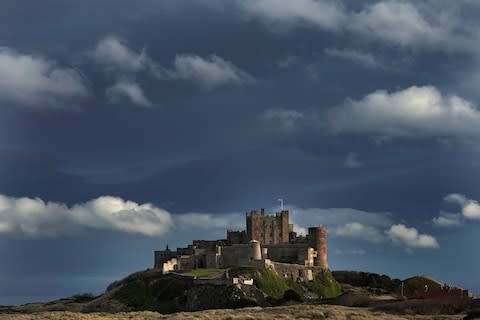
The “Village of the Year” title conjures images of kindly parsons, maypole-orbiting Morris men, well-kept greens and low-hanging thatched roofs. And yes, there is a bit of that in the show, but the four remaining entrants seem to model very different prototypes of village perfection. There is the wind-harried, castle-dominated Bamburgh; there is Broughshane, the flowery “garden village of Ulster”; there is Beer, the seaside Devon village whose old stone cottages look over a shingle beach from which fishing boats are still launched every morning; and there is Hampstead Norreys, a tidy, village-fête-ish sort of place in the green Berkshire countryside.
The show is presented by Penelope Keith, the stage-and-sitcom actress best known for her roles in The Good Life and To The Manor Born, and judged by a team of three experts from different backgrounds. Those judges are Patrick Grant, fashion designer and judge of BBC Two’s The Great British Sewing Bee; Alex Langlands, a historian and archaeologist who presented BBC documentaries about historic farms and Victorian bakers; and Juliet Sargeant, a garden designer whose modern-slavery-themed garden won a gold award at the 2016 Chelsea Flower Show.
Various kinds of settlement caught the judges’ eyes. “Some villages just have, on a plate, the gift of an absolutely beautiful, quintessential Englishness,” says Sargeant, “with Tudor beams and a lovely cobbled square or whatever. Others were more challenging as far as the look of the village goes.” Broughshane, perhaps. It doesn’t have the rustic cottages of Hampstead Norreys or the seaside setting of Beer, but the village’s floral displays have made it into an industrial-scale harvester of trophies, from the Ulster in Bloom award up to the Europe-wide Entente Florale, including the Britain in Bloom and All Ireland Tidy Town titles along the way. But all this hardcore flower-arranging depends on volunteers, a factor that impressed the judges as much as the village’s appearance did.
At a glance | What the judges are looking for
Says Sargeant: “A lot of the villages talked about what a fantastic community they live in” – the C-word is clichéd enough to be banned from the show: strike one – “and the fantastic community spirit” – strike two! – “and I’m sure that’s true of all of them, but in Broughshane it was absolutely palpable”. Lexie Scott, who as chairman of Broughshane’s community association put the village forward for the award, says that volunteers are vital to all aspects of village life, whether it’s the flowers, the senior citizens’ club, the young farmers’ club and the clay pigeon-shooting club. He says that this volunteering spirit, along with the lush Co Antrim countryside that surrounds it, propelled Broughshane to its place in the final four. “We’re very much a hands-on village,” he says, explaining that, with the local Michelin tyre factory closing down, Broughshane needs to develop its tourist industry.
And, Scott adds, “This is no insult to some of the beautiful villages I’ve seen on the show, but Broughshane is a real working village.” He mentions the butcher’s and the greengrocer’s, the pub and the library, the hardware shop run by an octogenarian. “If you can’t get it at McNeill’s,” Scott says, “you can’t get it anywhere.”
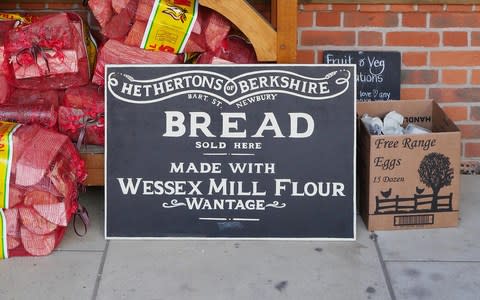
The good people of Hampstead Norreys might politely disagree with Scott’s argument in favour of commercial viability. Having had nowhere local to buy food and household goods since the Nineties, the villagers set up their own industrial and provident society in order to open a shop of their own in 2011. The Hampstead Norreys Community Shop, which sits in a pretty brick courtyard, has been successful enough to open an adjoining café. It’s difficult to imagine that any of this would be sustainable without the shop’s 70-strong group of volunteers, but most of the villagers believe that this generosity of spirit is what makes Hampstead Norreys special.
Tale of the tape | How the Village of the Year contenders compare
“It’s always had that essence,” says Jane Carruzzo, a 55-year-old who is one of the shop’s many shareholders. Carruzzo moved here 16 years ago after visiting with her husband, and they have brought up their three children in the idyllic surroundings. When they arrived, every neighbour visited them within 24 hours, bringing gifts and greetings. Far from being tarred as interlopers, new arrivals are still welcomed heartily: Pamela Betts, matriarch of the farming family on whose land the shop is built, brings a community shop voucher to the door of anyone who has just moved in.
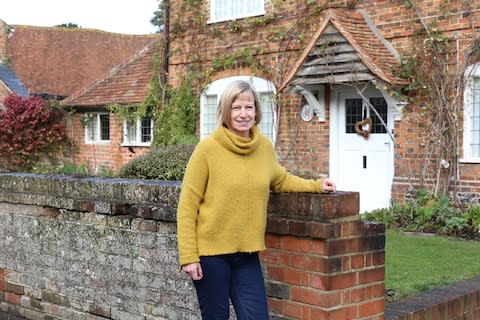
Even in a village this small, though, there are dissenters. “It’s all absolutely cringeworthy,” says one villager, whom The Telegraph declines to name for fear of retribution. “It’s a monoculture here. Everyone’s white, middle-aged, well-off. And so smug!” But the mutineers are outnumbered, and no suggestion of sedition appears to have reached the judges’ ears. “There was something very, very special about the shop in Hampstead Norreys, and the success of it, which doesn’t come easily,” says Sargeant. “Very often, in communities” – strike three! – “or groups, there are one or two leading lights, but with something like a village shop you really need the community to rally round that project to make it a success. They’ve got that in Hampstead Norreys, I thought.”
The judges were also attracted by unique idiosyncrasies. When the show visited Beer, for instance, it devoted a segment to the Beer Wurlitzer, a rare, early 20th-century American-built pipe organ that is designed to imitate the various instruments of a traditional orchestra. Naturally, it was used to accompany the Beer Anthem, a song that locals sing in praise of their village to the tune of Oh My Darling, Clementine. The words: “Down in Devon, down in Devon/ There’s a village by the sea/ It’s a little piece of heaven/ And the angels call it Beer.”
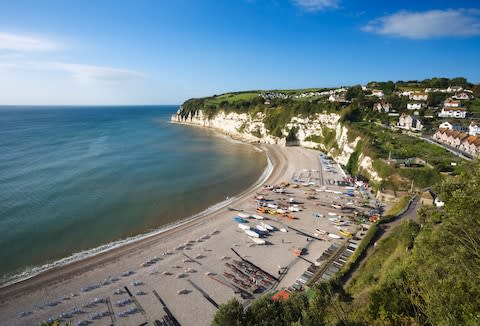
The wurlitzer was played by Trevor Bolshaw, a 78-year-old theatre organist who lives locally. “They certainly seemed to think it was something that was different, something of importance,” he said.
There was much else in Beer’s favour. As Bolshaw explains, its eventful history includes a strong smuggling industry, and the sheltering of Huguenots fleeing persecution in France. The refugees were skilled at making pillow lace, which was taken to the nearby market town of Honiton – which was enough for it to be named “Honiton lace”, gallingly – and thence to London.
The best English villages
But quirky history alone won’t be enough to win the contest. There is much of that on offer in all four of the villages. In Bamburgh, 58-year-old Julie Spruce runs The Pantry, a shop that sells cheese, cakes, souvenirs and drinks to locals and visitors. It occupies the building in which Grace Darling, a lighthouse keeper’s daughter who became a national heroine after assisting her father with a rescue mission, died of tuberculosis in 1842 at the age of 26.
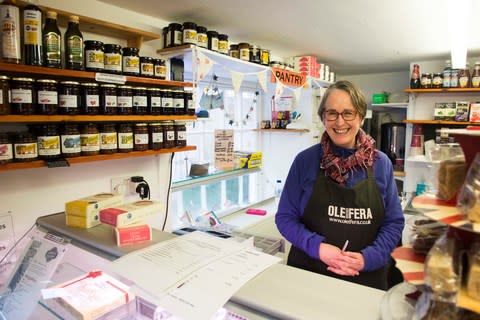
Spruce, pointing out the plaque on a cold February afternoon, protests that the weather isn’t always so inhospitable. “It was unbelievably hot last June,” she says. “I had to drive the dog to the beach to take him for a swim.”
Winning the final might hot up the village’s tourist scene even further. As Sargeant says: “If you make your village all absolutely beautiful and chocolate-boxy, with lots to do, people will want to come on holiday, and people who can afford it will want to buy a second home there.
“But of course that makes it harder, particularly for young people, to stay in their communities” – indeed, 47 per cent of Bamburgh’s residential properties are holiday homes – “and the question is: does that then have a detrimental effect on the village?”
There will soon be three villages looking for a consolation prize – and that might be it.
The Village of the Year final is on Channel 4 tonight at 8pm
Daytripper | More from our series on UK days out

